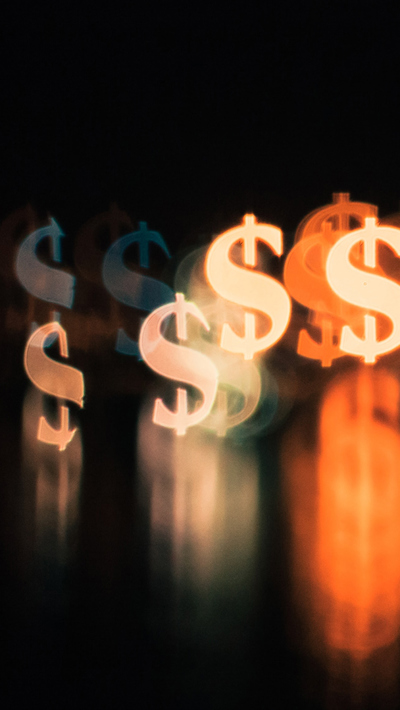Speak to our experts
Contents
The global financial sector has been unsettled by three high profile shocks within the last six months – FTX in late 2022, and Silicon Valley Bank and Credit Suisse in March 2023.
They came from different parts of the industry and are not directly linked, but they share a number of characteristics, and their proximity in time is no coincidence.
They landed in New Zealand in what was already a period of transformation. In our latest report, The banking industry: A look ahead, we have identified five key factors driving that change. They are not unique to New Zealand, in fact in many cases, New Zealand is behind the curve – deposit insurance, open banking and round-the-clock payments for example.
But New Zealand is facing these changes head on, all at once, at a time when technology is advancing into unknown territory and accepted ‘truths’ of modern banking are being re-examined.
The five change drivers are:
- The structural redesign of the domestic banking sector by the Reserve Bank of New Zealand (RBNZ) – discussed in Winners and losers on the new RBNZ playing field.
- Technological innovation – Digitised, decentralised, disrupted.
- A need for banks to reduce their reliance on deposits and reassess their asset base – Changing balance sheet dynamics will require fancy footwork.
- An increased focus on social licence – Social licence: great expectations.
- New obligations on banks, and new vulnerabilities – Banks increasingly on the front line and under fire.
The 'three crises' each illustrate the economic factors that are currently weighing on the banking sector, offering insights into how catastrophic events can unfurl and provide lessons for New Zealand.
In particular, the ‘bank runs’ that have been associated with each failure have all been turbocharged by modern technology. Further fintech developments, already firmly in the pipeline for implementation in New Zealand, will accelerate the customer’s ability to move funds – making the role of both bank and regulator more difficult.
Finding the right balance of financial regulation, market discipline and investor protection is a hard problem to solve. Unintended consequences – and complaints – arise regardless of approach. And where there are depositor/investor losses, litigation will follow.
Large static deposit bases – an important source of cheap funding – may become more volatile if consumers take up new fintech solutions promoting transparency, transferability and choice. While recent U.S. experience has shown a ‘flight to quality’, it also demonstrates the increasing speed at which deposits can move.
We expect banks to focus on building wider capability and incorporating new technologies to encourage customer loyalty – both to compete with new providers, and to meet their social licence and front line regulatory responsibilities.
A tale of three crises
FTX Trading Ltd.
At the unregulated end of the scale, cryptocurrency exchange FTX collapsed dramatically in late 2022 when it became the victim of a run following reported leverage and solvency concerns. As the chaos was confined to a small and relatively discrete segment of the economy, there was no incentive for the government to intervene and FTX was left to fail. However it will have damaged public confidence in private sector crypto and captured many retail customers who had turned to FTX for investment purposes or financial inclusion.
What does this mean for New Zealand?
Local uptake of cryptocurrencies has been slow, so the risk of a domestic crypto crisis is currently small. But it may not stay that way.
Interest in cryptocurrency options is growing rapidly in the Asia Pacific region – both in the sophisticated financial centres of Hong Kong, Singapore and Australia, and also in the smaller island economies, with Tonga and Fiji looking at making Bitcoin legal tender for reasons of financial inclusion.
More broadly, as the range of financial services in New Zealand expands, the FTX failure illustrates how rapidly the effects and contagion of a run can develop in a fast-growing unregulated market.
Silicon Valley Bank (SVB)
The chain of events that caused SVB to collapse will continue to be the subject of much media and expert analysis and commentary. Most at least agree SVB represented a unique set of circumstances, including:
- A large number of deposits over the deposit insurance limit;
- An unhedged over-exposure to fixed interest U.S. treasuries; and
- The inability of the lender-of-last-resort regime to respond in timely way to a modern tech-enabled depositor bank run.
But the contagion went beyond SVB with both Signature Bank and Silvergate experiencing runs after depositors took fright at their exposure to crypto and tech assets.
What does this mean for New Zealand?
The principal relevance for New Zealand is that although SVB was not in the category of “systemically important” banks, and although the issues that undid it were specific to it, the U.S. Government stepped in immediately to guarantee all deposits, and put in place a lending facility to help minimise the risk to other similarly placed banks.
It will be interesting to see how the RBNZ reacts to this re-definition of moral hazard as we introduce deposit insurance across all deposit takers. The Deposit Takers Act would technically allow the Government to increase deposit insurance above its $100,000 cap for “financial stability” reasons (and levy the remaining banks afterwards to recover the cost).
Whether the RBNZ would want to give any impression of a possible total government guarantee is another story.
Credit Suisse (CS)
The solution in this case - rescue by UBS as part of a government-backed cut price deal - while very tidy and effective, may not be widely replicable and was not without controversy. One critic said Switzerland would now be regarded as “a financial banana republic”, although the truth is somewhat less drastic.
Of more interest has been the treatment of Additional Tier 1 (AT1) bondholders. AT1 regulatory capital instruments are often called Contingent Convertibles or “CoCos”, meaning bonds that convert into shares if certain triggers are hit to keep the bank afloat as a going concern.
But CS’s AT1 bonds technically were not CoCos. They were designed to be written down to prevent CS from becoming insolvent, with no in-built equity conversion mechanics. The full write-down has panicked investors and prompted a reassessment of the asset class.
“[In] practice, the majority of contingent debt issued globally has been write-off only - the debt will cease to exist but no new ordinary shares will be issued. […] If a debt writes off, but no compensation is paid, debt holders absorb losses ahead of existing shareholders.”
RBNZ – Capital Review Paper 2 (2017)
What does this mean for New Zealand?
New Zealand’s own regulatory capital instruments no longer include either conversion or write-down mechanics, which should provide some investor comfort. However, the RBNZ still retains a wide discretion in how it may structure a bank resolution or rescue.
We expect further investor focus on regulatory guidance (including the application of open bank resolution (OBR)), particularly as regulators in the European Union and England have made explicit statements in favour of respecting the expected creditor hierarchy.
This article is an excerpt from our report The banking industry: A look ahead. Download the full report at the link below, or read the other articles in the series.








































































































